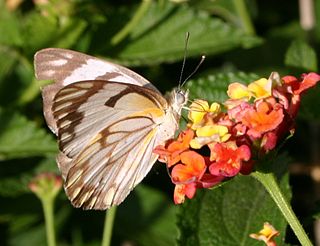
Pierini is a tribe of butterflies within the family Pieridae.

The Satyrini is one of the tribes of the subfamily Satyrinae. It includes about 2200 species and is therefore the largest tribe in the subfamily which comprises 2500 species.
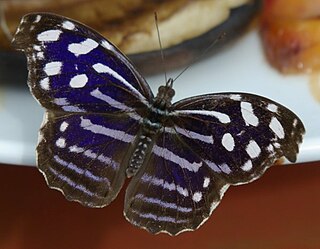
Biblidinae is a subfamily of nymphalid butterflies that includes the tropical brushfoots. This subfamily was sometimes merged within the Limenitidinae, but they are now recognized as quite distinct lineages. In older literature, this subfamily is sometimes called Eurytelinae.

Miletinae is a subfamily of the family Lycaenidae of butterflies, commonly called harvesters and woolly legs, and virtually unique among butterflies in having predatory larvae. Miletinae are entirely aphytophagous. The ecology of the Miletinae is little understood, but adults and larvae live in association with ants, and most known species feed on Hemiptera, though some, like Liphyra, feed on the ants themselves. The butterflies, ants, and hemipterans, in some cases, seem to have complex symbiotic relationships benefiting all.

The noctuid (owlet) moth genus Cydosia is the only member of the tribe Cydosiini in the subfamily Acontiinae. The genus was erected by James Duncan with John O. Westwood in 1841. The few species occur from Argentina along the Andes to the Caribbean and Central America, reaching into the southern United States. The unusual format for the authority citation is explained at Butterflies and Moths of the World as "The difficulty can best be overcome by attributing Westwood with anonymous junior authorship."

Acontiinae is a subfamily of bird dropping moths in the family Noctuidae. There are more than 50 genera and 430 described species in Acontiinae, found worldwide in temperate and tropical climates.

The Aphnaeinae are a subfamily of butterflies in the family Lycaenidae.

Epidesma is a genus of moths in the subfamily Arctiinae. The genus was erected by Jacob Hübner in 1819.

The Eudaminae are a subfamily of skipper butterflies. Their original type genus Eudamus is today a junior synonym of Urbanus. They are largely found in the Neotropics, with some extending into temperate North America, and one genus, Lobocla, endemic to East Asia.

Limenitidini is a tribe of brush-footed butterflies of the subfamily Limenitidinae.

Heliothinae is a small, cosmopolitan subfamily of moths in the family Noctuidae, with about 400 described species worldwide. It includes a number of economically significant agricultural pest species, such as Helicoverpa armigera and Helicoverpa zea.
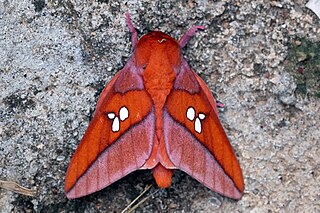
Ceratocampinae is a subfamily of moths in the family Saturniidae. Species can be found in the New World.
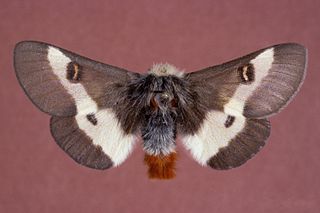
Hemileucinae is a subfamily of the family Saturniidae, including a number of taxa whose caterpillars have venomous urticating hairs.

Oenochrominae is a subfamily of the moth family Geometridae.

Desmobathrinae is a subfamily of the moth family Geometridae described by Edward Meyrick in 1886.
Parargina is a subtribe of butterflies of the subfamily Satyrinae.
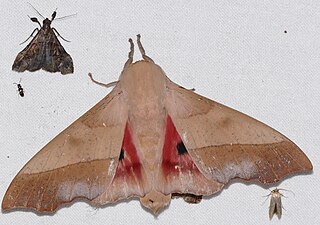
Syssphinx is a genus of moths of the family Saturniidae. The genus was erected by Jacob Hübner in 1819.

Zaretis is a Neotropical nymphalid butterfly genus in the subfamily Charaxinae.
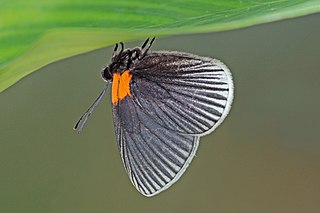
Euselasiinae is a subfamily of Riodinidae. The species are confined to the Neotropical realm.

Metoponiinae is a subfamily of owlet moths in the family Noctuidae. There are about 16 genera and more than 70 described species in Metoponiinae.



















